For many seniors in India, losing a limb is more than a medical event—it changes how they live each day. A prosthetic can bring back movement, confidence, and independence. But for many families, the first question that arises is not about technology—it’s about cost.
Advanced prosthetics like myoelectric hands or bionic arms are life-changing, yet they can seem out of reach when budgets are limited or when insurance terms feel confusing. Many seniors hesitate to take the next step simply because they don’t know that flexible, affordable options actually exist.
In India today, paying for prosthetics has become easier than ever before. From monthly EMIs to government schemes, insurance coverage, and cashless facilities, there are multiple paths to make advanced prosthetics truly accessible.
This guide explains these options in simple language, especially for seniors and their families who want clarity before making a decision. You’ll learn how EMI plans work, how insurance can help, what documents are needed, and which government initiatives can reduce costs. The goal is to help you make a smart, stress-free choice—so finances never stand in the way of mobility.
Understanding the Real Cost of Prosthetics in India
What Goes Into the Cost of a Prosthetic
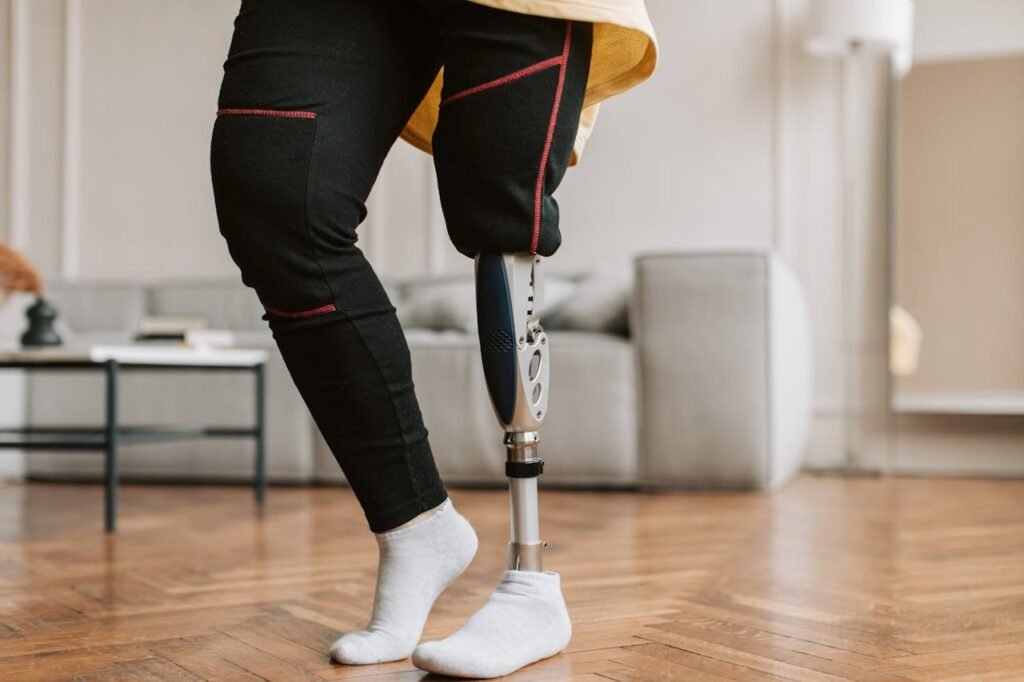
When people hear that a prosthetic hand or leg costs a few lakh rupees, it often feels overwhelming. But it helps to understand where that number comes from. A prosthetic isn’t a single product—it’s a custom-built system made to fit one person perfectly.
Each limb involves multiple components—mechanical joints, high-grade materials, sensors, batteries, and control systems. The more advanced the prosthetic, the more technology it includes. For example, a mechanical arm might simply open and close, while a myoelectric arm like the Grippy™ Bionic Hand from RoboBionics responds to natural muscle signals and gives tactile feedback through our Sense of Touch™ technology.
Beyond parts, the cost includes expert fitting, calibration, and follow-up visits. Skilled prosthetists spend hours ensuring balance, comfort, and proper alignment. A good fit makes the difference between a limb that’s used daily and one that sits unused.
Imported vs. Made-in-India Prosthetics
Traditionally, advanced prosthetics were imported from Europe or the US. Their prices often crossed ₹10 lakh, putting them out of reach for most Indian families. Shipping, taxes, and currency conversion only added to the burden.
But things are changing fast. Indian manufacturers like RoboBionics now make high-quality, world-class prosthetics locally. Nearly 60 of our 64 components are made in India. That’s why our Grippy™ range is priced between ₹2.15 lakh and ₹3 lakh—less than one-third the cost of most imported options.
This shift is more than financial. It means easier maintenance, faster service, and access to spare parts without waiting for international shipments. For seniors, that’s peace of mind—knowing that help is nearby whenever needed.
The Role of Technology in Cost
The type of prosthetic directly influences price. Basic mechanical prosthetics are the most affordable, designed for simple daily activities like holding or supporting light objects.
Next are hybrid models that combine mechanical structure with limited electronics. These allow smoother movement and require less physical effort.
At the top are bionic or myoelectric prosthetics. These devices use muscle signals to move naturally, offering features like adaptive grip and touch feedback. While they cost more initially, they reduce long-term fatigue, offer greater independence, and often last longer with proper care.
Seniors should always discuss their lifestyle with a prosthetist before choosing. Sometimes, a simpler model fits better and costs less without sacrificing function.
Why Seniors Often Need Custom Adjustments
As people age, muscles become softer, and skin gets more sensitive. That’s why seniors often require extra comfort adjustments. The socket—the part that connects the limb to the body—must fit gently, avoiding pressure points or friction.
These custom fittings take time and precision. Prosthetists may need multiple trials before achieving the right balance. These visits are part of the overall cost, but they ensure that the limb feels natural and safe.
Customization also includes adjustments for posture, balance, and daily routines—especially for seniors who walk, cook, or perform prayers regularly. The goal is always ease, not speed.
Maintenance and Long-Term Value
When comparing prosthetic options, seniors should think long-term rather than just upfront price. Maintenance, warranty, and local service availability make a big difference in real value.
Imported prosthetics may cost more not just because of initial price but because repairs require special parts or international support. Locally made prosthetics from RoboBionics offer affordable service plans, accessible clinics, and quick part replacements.
A well-maintained prosthetic can last for years, making the investment worthwhile. In most cases, a little regular cleaning, battery care, and yearly service checks are enough to keep performance steady.
Emotional Value Beyond Price
There’s another cost rarely discussed—the emotional one. Many seniors postpone getting prosthetics because of guilt or fear of burdening their families financially. But every day without mobility can take a deeper toll on health and confidence.
When seniors regain the ability to walk to the market, hold their grandchild’s hand, or pray without help, that joy can’t be measured in money. Financing options exist precisely so no one has to sacrifice dignity for affordability.
At RoboBionics, our mission is to make this emotional recovery as easy as the physical one—through both technology and financial accessibility.
How EMI Plans Make Prosthetics Affordable for Seniors
Why EMI Matters
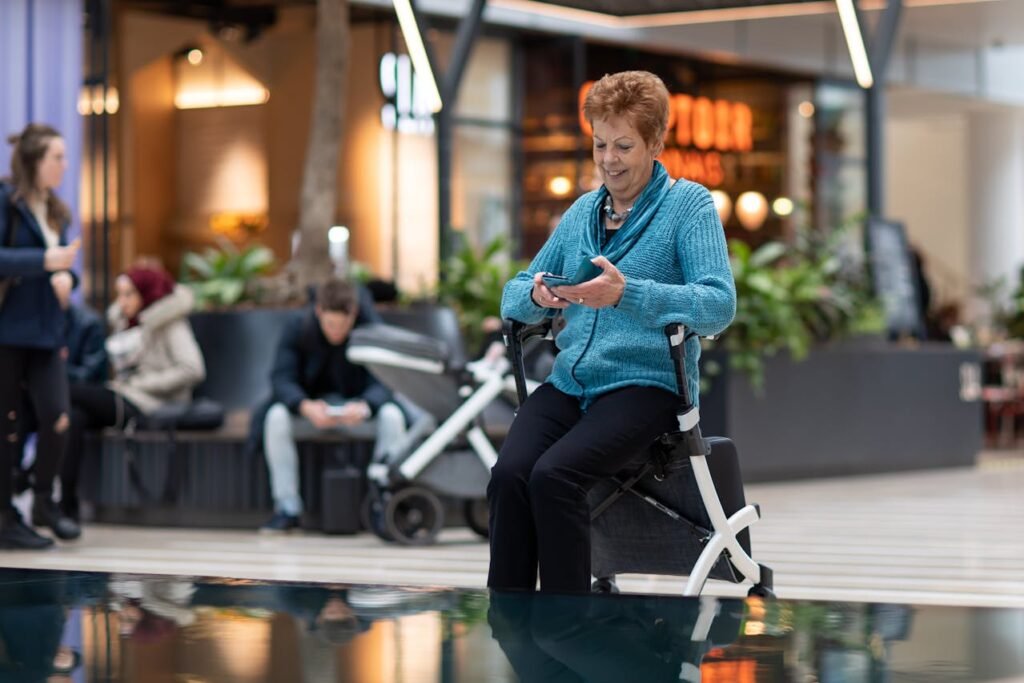
Not every family can pay for a prosthetic upfront. For many seniors living on pensions or fixed incomes, large one-time payments are difficult. EMI plans spread the cost into smaller monthly payments—making advanced prosthetics affordable without financial strain.
With an EMI plan, seniors can begin using their prosthetic right away while paying over time. This not only reduces pressure but also ensures timely access to rehabilitation and recovery.
Most importantly, EMI options make it possible to choose a higher-quality prosthetic rather than settling for a cheaper one that may not provide the same comfort or functionality.
How EMI Options Work in India
RoboBionics partners with several financial institutions and payment platforms to offer easy EMI solutions. Depending on the bank and plan, customers can spread payments over 3, 6, 9, or even 12 months.
The approval process is simple. Once the prosthetic model is selected, the EMI request is processed with basic ID and income proof. Many of our senior customers use family members as co-applicants if needed, ensuring smooth eligibility.
The EMI amount remains fixed every month, allowing families to plan their budget easily. Some banks even offer low or zero-interest EMI for medical equipment purchases.
Documents Needed for EMI Approval
Seniors often worry about paperwork, but the process is straightforward. Generally, the following are required:
- Proof of identity (Aadhaar card, PAN card, or passport)
- Proof of residence (utility bill or ration card)
- Income proof (pension statement or a guarantor’s income slip)
Our team at RoboBionics helps customers complete the process from start to finish, ensuring there’s no confusion or delay.
Digital Payment and EMI Platforms
Digital India initiatives have made EMI options more accessible than ever. Many prosthetic purchases can now be financed through digital payment apps or credit card EMI systems.
If you use services like Bajaj Finserv, Pine Labs, or HDFC Bank’s Smart EMI, your prosthetic purchase can often be approved on the spot. Even without a credit card, NBFCs and partner healthcare financiers can support through medical EMIs.
For seniors unfamiliar with online systems, our staff walks them through each step, ensuring safe, transparent transactions.
EMI for Government Pensioners and Retired Employees
Government pensioners and retired PSU employees may have access to specialized EMI or advance payment schemes. Many banks like SBI, PNB, and Union Bank offer medical equipment loans or EMI conversions at reduced interest for retirees.
These loans are usually small and flexible, perfect for prosthetic purchases. The pension account itself can serve as the repayment source, making it stress-free.
We encourage seniors to check with their bank branch about such programs—often, even bank managers aren’t fully aware that medical EMIs cover prosthetics.
How EMI Differs from Medical Loans
While both EMI and loans help with affordability, they work differently. An EMI is often tied directly to a purchase—it’s a split payment plan through the seller or partner bank. A medical loan, on the other hand, provides cash first and can cover multiple healthcare needs.
For seniors, EMIs are simpler. There’s no need to handle separate payments or complex disbursement forms. Everything—from prosthetic selection to billing—stays within one trusted system.
Medical loans may suit families managing multiple healthcare costs, while EMIs are best for focused, one-time prosthetic purchases.
RoboBionics’ Flexible EMI Support
At RoboBionics, we believe finance should never stop recovery. That’s why we’ve built flexible EMI support into our purchase process. We work with seniors and their families to select plans that fit their monthly comfort.
Whether through credit card EMI, NBFC finance, or direct installment payment, our aim is to make the path from decision to delivery smooth and stress-free.
We also help customers apply for reimbursement from government schemes or insurance alongside EMI payments, so they can combine benefits and reduce out-of-pocket cost further.
How EMIs Encourage Faster Rehabilitation
When seniors don’t have to delay prosthetic fitting due to funds, they recover faster. The first few months after amputation are critical for building balance, muscle control, and confidence.
EMI options ensure that seniors get fitted and trained immediately, keeping the healing process on track. Early mobility also reduces the risk of stiffness, depression, or dependency.
By turning a large one-time cost into manageable steps, EMI programs make both physical and emotional recovery possible at the right time.
Common Misconceptions About EMI
Some families fear that EMI involves hidden charges or complicated paperwork. In truth, EMI for prosthetics works just like any medical equipment installment plan.
Interest rates, if applicable, are shared clearly before approval. Monthly amounts are fixed and predictable, with no surprise deductions. Most importantly, early repayment options are available if families wish to complete payments sooner.
Another misconception is that only working individuals qualify. In reality, retired seniors, homemakers, and even family caregivers can co-sign or apply under certain plans.
At RoboBionics, transparency is our first policy—we explain every figure, every term, and every option in plain, simple language.
How to Choose the Right EMI Tenure
Choosing between a short or long EMI term depends on comfort, not speed. A shorter plan means higher monthly payments but less total interest. A longer plan lowers monthly stress, spreading costs evenly.
For seniors, comfort often matters more than quick repayment. A steady plan that fits easily within pension or savings income keeps the focus on healing rather than bills.
Our team helps calculate the best option by understanding each family’s situation, ensuring peace of mind from the very first step.
Insurance Coverage for Prosthetics in India
Why Insurance Matters for Seniors
Healthcare expenses can increase with age, and prosthetics are often one of the biggest one-time costs after surgery. While EMI helps spread payments, insurance coverage can reduce them even further.
Unfortunately, many seniors and their families are unaware that prosthetics can be covered by health insurance—partially or fully—depending on the policy. Some give up too early, assuming no help is possible. But that’s changing.
Today, several insurers in India include prosthetic support under accident, disability, or post-surgery rehabilitation clauses. Knowing how to use these benefits can save seniors thousands of rupees and make recovery far more affordable.
Understanding How Prosthetics Fit Into Health Policies
Health insurance companies categorize prosthetics as “medical devices” or “rehabilitation aids.” They may cover them under:
- Accidental injury coverage
- Post-amputation treatment benefits
- Hospitalization-linked prosthetic replacement
- Disability or loss-of-limb compensation
For instance, if an amputation occurred due to an accident, the insurer may reimburse the cost of the prosthetic limb as part of the claim. In other cases, insurers cover up to a certain percentage of rehabilitation devices after surgery.
It’s always important to ask directly: Does this policy cover external prosthetic limbs after amputation? Clear questions often unlock benefits hidden in small print.
Government-Backed Insurance Schemes
India has launched several government-backed health programs that support seniors, especially those from low-income groups.
The Ayushman Bharat–Pradhan Mantri Jan Arogya Yojana (PMJAY) is one of the biggest. It offers cashless treatment coverage of up to ₹5 lakh per family per year in empanelled hospitals. Some prosthetic-related expenses, particularly after surgeries, can be included under rehabilitation or assistive device packages.
State health schemes like Tamil Nadu CMCHIS, Maharashtra Mahatma Jyotiba Phule Jan Arogya Yojana, or Karnataka’s Suvarna Arogya Suraksha Trust also provide coverage or reimbursement for prosthetic fitting through partner hospitals.
Seniors can check their eligibility using their Aadhaar and ration card numbers on official government portals. RoboBionics’ support team often assists customers in identifying which local programs they qualify for.
Private Health Insurance Policies
Leading private insurers such as Star Health, HDFC Ergo, Niva Bupa, and Care Health have started expanding coverage to include assistive devices like prosthetic limbs, especially when medically necessary after an accident or surgery.
In these policies, the prosthetic is treated as part of post-operative care, meaning reimbursement can be claimed up to a specified limit.
Some companies also allow “add-on covers” that include mobility aids and prosthetics for an extra premium. This option works best for families planning long-term healthcare security for seniors.
Group and Corporate Policies
Many retired government employees, PSU workers, or corporate pensioners are still eligible for extended medical benefits under their previous employment.
For example, Central Government Health Scheme (CGHS) and Ex-Servicemen Contributory Health Scheme (ECHS) reimburse prosthetic fittings at authorized centers. These programs maintain a list of approved prosthetic providers, ensuring both quality and price control.
RoboBionics is recognized by several such networks and can guide seniors through documentation if they’re entitled to partial or full reimbursement.
Disability and Accident Insurance
Separate from regular health policies, accidental disability insurance often provides a lump-sum payout in case of limb loss.
These funds can be directly used to purchase a prosthetic. Unlike medical insurance, which reimburses bills, accident insurance gives a fixed amount based on disability type—partial or total.
Seniors who already have life or accident insurance should review their policy documents or consult their insurance agent to see if such coverage exists. In many cases, they’ve had these benefits for years without realizing it.
How to Claim Prosthetic Expenses
Claiming insurance for prosthetics follows the same general steps as any medical reimbursement. Seniors or their families must keep all documents, including:
- Doctor’s prescription recommending the prosthetic
- Hospital discharge summary mentioning amputation
- Quotation and invoice from the prosthetic manufacturer or clinic
- Payment receipts and photographs (if required)
Once these documents are submitted, the insurer evaluates whether the prosthetic falls under approved items. If covered, the reimbursement is credited directly to the policyholder’s account.
For cashless policies, prior approval (pre-authorization) must be obtained before fitting. RoboBionics assists in this process by providing required medical details, product codes, and bills.
Common Challenges in Insurance Claims
Many rejections occur simply due to missing details or unclear medical records. Seniors should always ensure that the amputation and prosthetic recommendation are both noted clearly by the doctor in hospital discharge papers.
Another common reason for partial payment is a lack of itemized bills. Insurance companies prefer detailed breakdowns rather than lump-sum invoices.
To avoid such issues, RoboBionics provides clear documentation with technical specifications, making it easy for insurers to process claims smoothly.
When Insurance Doesn’t Cover Prosthetics
Some older insurance plans exclude prosthetics or classify them as non-payable items. But even in these cases, other routes exist.
Rehabilitation funds, NGO assistance programs, and government disability benefits can fill the gap. RoboBionics works with several charitable and institutional partners to help seniors apply for financial aid when insurance isn’t available.
It’s worth remembering that many insurance exclusions are being updated each year. Asking insurers about new add-ons or revised terms can reopen doors that once seemed closed.
The Role of Documentation and Medical Support
Proper documentation is the backbone of successful reimbursement. Seniors should maintain a simple file with all papers related to their amputation, prosthetic fitting, and follow-up visits.
Doctors’ letters, prescriptions, and test results serve as proof of medical necessity. Photos or assessment forms from prosthetic centers strengthen the case further.
Insurance staff often appreciate clear, organized paperwork—it makes their job easier and speeds up approval. A well-prepared file is often the difference between a quick claim and a long delay.
Cashless and Reimbursement Options for Seniors
How Cashless Facilities Work
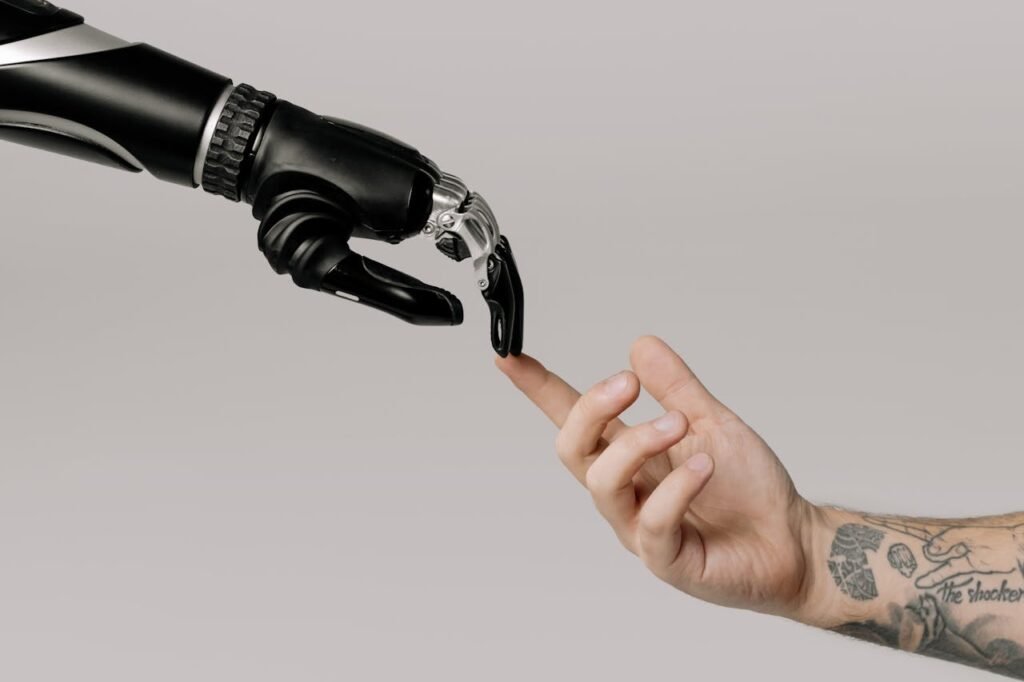
Cashless payment is the simplest form of financial relief for seniors buying prosthetics. Instead of paying the full amount upfront, the payment is settled directly between the insurance provider and the prosthetic clinic or hospital.
Under cashless systems, seniors show their policy card, undergo verification, and receive treatment or fitting without handling large payments. After approval, the insurer pays the agreed amount directly to the clinic.
This system is most common in hospitals or prosthetic centers empanelled under specific insurance or government programs. RoboBionics works with several such networks to make the process smoother for senior users.
Eligibility for Cashless Prosthetic Services
Not all insurance policies offer cashless benefits outside hospitalization, but many do when the prosthetic is part of surgical rehabilitation.
For instance, if a patient undergoes amputation in a hospital covered under PMJAY or a private insurer, the fitting of a prosthetic limb within a defined post-operative period may qualify for cashless processing.
Seniors should confirm eligibility in advance by calling their insurance helpline or consulting our team for pre-authorization support.
The Process of Pre-Authorization
Pre-authorization is a formal approval from the insurer before the prosthetic fitting begins. It ensures the insurer recognizes the need for the prosthetic and agrees to cover the cost.
RoboBionics helps customers prepare all documents—doctor’s note, product estimate, and photographs if needed—and submits them on their behalf. Once approved, the fitting and payment proceed seamlessly.
Without pre-authorization, customers may have to pay first and apply for reimbursement later. That’s why early coordination saves both time and stress.
Combining EMI with Insurance and Cashless Benefits
Many seniors don’t realize they can combine different financial options. For example, they can start an EMI plan to receive the prosthetic immediately while waiting for insurance reimbursement or claim approval.
Once the claim is settled, the reimbursement can be used to clear remaining EMIs. This hybrid approach ensures seniors don’t lose recovery time while managing affordability.
RoboBionics supports this combined model regularly—helping families plan payment schedules that match their financial comfort.
The Role of Government and Charitable Partnerships
Beyond insurance and EMI, India has a growing number of public and private initiatives designed to assist prosthetic users.
Schemes under the Department of Empowerment of Persons with Disabilities (DEPwD), ALIMCO (Artificial Limbs Manufacturing Corporation of India), and state-level social welfare departments often organize camps or provide financial assistance for prosthetic fittings.
While most programs focus on lower-income groups, seniors with limited pensions can apply with supporting documents like income certificates and medical prescriptions.
RoboBionics actively collaborates with NGOs and rehabilitation centers to ensure these benefits reach those who need them most.
Reimbursement Through CSR and NGO Funds
Corporate Social Responsibility (CSR) programs from large companies occasionally fund prosthetic fittings for seniors as part of their community outreach.
NGOs, too, run rehabilitation grants for amputees, especially after accidents or medical complications like diabetes. These programs may require simple applications, photos, and doctor verification.
Our team maintains updated information about ongoing CSR and NGO initiatives and can guide seniors on where and how to apply for aid.
Banking and Microfinance Support
Several banks and microfinance institutions offer small personal loans for healthcare needs. Seniors with pension accounts or recurring deposits can often get faster approval.
Many rural and cooperative banks also participate in government-subsidized medical loan programs. Interest rates are low, and repayment terms are flexible, making them suitable for retired citizens.
Even though these are not formal “prosthetic loans,” the funds can be used for any medical device purchase, including advanced limbs.
Why Transparency Matters in Payment Planning
Financial planning for prosthetics should always be transparent and easy to follow. Seniors and their families deserve full clarity about total cost, available discounts, and payment timelines.
At RoboBionics, every transaction is explained in detail before any decision is made. We share complete cost breakdowns—product, fitting, training, and follow-up service—so families know exactly what they’re paying for.
This openness builds trust and reduces anxiety, especially for seniors making such an important purchase for the first time.
How Families Can Support the Process
Family members play a big role in helping seniors navigate finances. They can assist with forms, follow up with insurance companies, and organize documents for claims.
Involving family early also ensures everyone understands the options—EMI, insurance, or cashless—and chooses the best mix together. It turns what might feel like a financial challenge into a shared project of care.
Seniors who feel supported this way are more confident, and their emotional recovery is often faster.
Practical Steps for Seniors Applying for Financial Support
Step One: Get the Right Medical Documentation
Every financial option—whether EMI, insurance, or government scheme—begins with proof of medical need. Seniors should always request a written recommendation for a prosthetic from their treating doctor or surgeon.
This note should clearly mention the type of limb required and why it’s essential for mobility or rehabilitation. Hospitals often issue discharge summaries after amputation surgeries; keeping multiple copies of this document helps.
If you’re applying for insurance or government reimbursement, this medical note becomes the first and most important step in approval. RoboBionics helps seniors and families prepare these papers in the correct format to save time and effort.
Step Two: Compare Prosthetic Options Before Deciding
Before applying for any financial plan, it’s wise to understand the options available. The price difference between basic, mechanical, and bionic prosthetics can be significant, but so can the comfort and control they provide.
At RoboBionics, we encourage seniors to visit our demo sessions—either in person or virtually—before committing. Seeing the prosthetic in action makes the choice easier and ensures you pick a model that truly fits your lifestyle and budget.
This clarity also helps when applying for EMI or insurance, since you’ll know exactly what cost estimate to include in your application.
Step Three: Prepare Financial and Identity Documents
Whether it’s for EMI approval, insurance claim, or government subsidy, the following documents are typically required:
- Aadhaar card and PAN card for identification
- Proof of residence (like electricity bill or ration card)
- Recent passport-size photos
- Bank passbook or account details
- Doctor’s certificate or discharge summary
- Quotation or invoice from the prosthetic provider
Having these ready saves days of back-and-forth communication. Seniors can ask family members to help scan and store digital copies, as many applications now happen online.
Step Four: Contact the Prosthetic Provider for EMI or Cashless Processing
Once you’ve chosen the right model, the prosthetic provider can connect you directly with their finance or insurance partners.
At RoboBionics, we do this immediately after consultation. Our finance team checks your eligibility for EMI and guides you through short forms or digital approvals. For insured seniors, we help submit pre-authorization requests to partner insurers for cashless benefits.
Having a single point of contact for both medical and financial matters reduces confusion and speeds up approvals dramatically.
Step Five: Follow Up and Track Your Application
After submission, regular follow-ups are key. Whether it’s an EMI approval, insurance claim, or government scheme, updates may take time due to document verification.
Seniors or family members should call or email the respective office every few days to confirm progress. RoboBionics also tracks these applications for customers, providing reminders or updates when any additional paperwork is needed.
Persistence ensures that applications don’t get lost in queues, and it shortens waiting periods by days or even weeks.
Step Six: Keep Every Receipt and Report
Once your prosthetic is fitted, keep all payment receipts, service reports, and adjustment notes in one folder. These documents are useful not only for warranty claims but also for future insurance renewals or reimbursements.
Some government programs may even reimburse after fitting if receipts and medical proof are presented within a set timeframe. Organized records make such reimbursements effortless.
At RoboBionics, we provide detailed receipts and product information sheets—so seniors have everything needed for both warranty and claim support.
Step Seven: Revisit and Renew
Insurance and EMI benefits evolve. Many seniors think once they’ve completed payments or claimed a benefit, the process ends. But policies and government schemes update yearly.
A small review each year—checking new covers, updated limits, or local welfare programs—can open new doors for financial assistance.
RoboBionics keeps its customer network informed through newsletters and updates about any new national or state-level financial aids for prosthetic users.
Step Eight: Seek Help When Needed
Seniors shouldn’t have to manage financial paperwork alone. Local NGOs, prosthetic centers, or even government help desks can assist with form-filling or online uploads.
At RoboBionics, our customer care line and email support are open for anyone who needs help with EMI processing, claim follow-ups, or government documentation. Our goal is not just to sell a product but to make the journey easy and stress-free.
Asking for help is not dependency—it’s empowerment. It ensures that benefits already meant for seniors actually reach them.
Empowering Seniors to Access World-Class Prosthetics Without Financial Fear
Why Affordability Matters as Much as Innovation
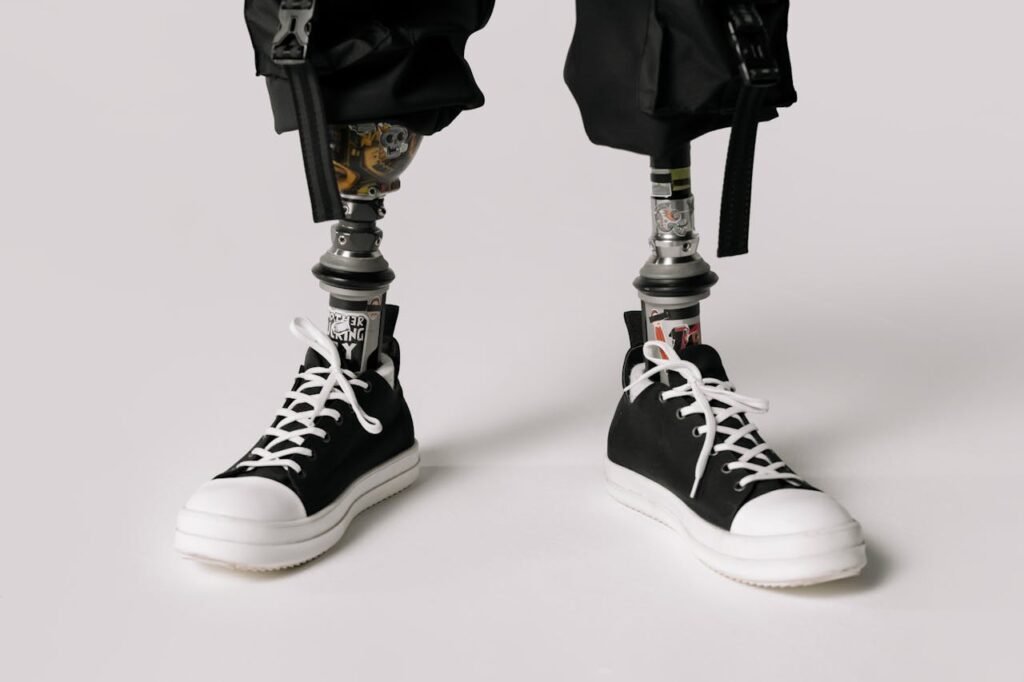
A prosthetic only changes lives when people can actually afford it. Advanced technology means little if it stays out of reach. That’s why RoboBionics’ mission combines innovation with inclusion.
We manufacture high-quality prosthetics right here in India—reducing costs while maintaining international standards. Our Grippy™ series, built with patent-pending Sense of Touch™ technology, offers cutting-edge control and tactile feedback at a price that’s achievable for Indian families.
Paired with EMI, insurance, and cashless support, we’ve turned what used to be a ₹10-lakh challenge into a realistic, hopeful step toward independence.
The True Meaning of Accessibility
Accessibility isn’t just about ramps and roads—it’s about removing barriers that stop people from living freely. Financial worry is one of those barriers.
By offering flexible payment options, RoboBionics ensures that seniors don’t delay their recovery due to cost. Our goal is for every senior to experience what it feels like to regain movement without the shadow of financial pressure.
When money stops being the main question, confidence takes its place. That’s when rehabilitation truly begins.
Seniors Deserve Dignity, Not Dependence
For older adults, buying a prosthetic isn’t just a purchase—it’s a decision about dignity. Many seniors hesitate to spend on themselves, especially after retirement. But a prosthetic isn’t a luxury; it’s a tool for living.
Being able to walk to the park, cook again, or perform daily rituals independently adds meaning and self-worth. EMI and insurance exist to make this dignity affordable.
At RoboBionics, we’ve seen countless seniors who thought they couldn’t afford a prosthetic smile again after learning how manageable payments could be. That moment of relief is what drives our work.
Empowering Families to Support Seniors
Financial conversations around prosthetics should include the entire family. When children and caregivers understand payment options, decisions become faster and easier.
We often meet families who divide EMI payments or help manage insurance follow-ups for their parents. These small acts of support bring peace of mind and allow seniors to focus on recovery, not paperwork.
Family involvement also ensures accountability—keeping track of warranties, service schedules, and claims. It turns financial planning into a shared act of love.
Why Transparency Builds Trust
Financial decisions can feel intimidating, especially for seniors used to traditional banking systems. That’s why transparency is at the heart of RoboBionics’ approach.
Before any commitment, we explain costs in detail—no hidden charges, no fine-print surprises. Every EMI plan, insurance link, and government program is shared clearly. Our customers always know exactly where their money goes.
This openness builds confidence and helps families plan responsibly. We believe trust is not earned by promises but by clarity.
The Power of Timely Support
Delaying prosthetic fitting due to finances can slow physical recovery. Muscles weaken, balance reduces, and habits form that are hard to reverse later.
EMI and insurance eliminate that delay. With immediate fitting and structured payments, seniors start rehabilitation right away, leading to better long-term results.
Timely support also reduces hospital readmissions, saving even more costs in the future. Quick action today builds stronger health tomorrow.
Creating Hope Through Partnerships
RoboBionics partners with hospitals, NGOs, and rehabilitation centers across India to ensure no senior is left behind due to finances. We continue expanding these partnerships to bring easy access to EMI, insurance, and cashless options nationwide.
Every collaboration strengthens the ecosystem of care—where prosthetic manufacturers, doctors, insurers, and families work together for one goal: helping seniors walk again with pride.
We believe healthcare innovation means nothing without compassion. That’s why our partnerships go beyond products—they’re built on understanding human needs.
How Seniors Can Take the First Step
The first step toward financial clarity is a conversation. Seniors or families can call or visit a RoboBionics center to discuss options privately. Our experts explain every available plan, scheme, and approval process in plain language—no jargon, no rush.
Even if you’re unsure about which prosthetic to choose, we guide you through demonstrations and comparisons. Once you’ve made your choice, our finance team takes care of the paperwork and coordination.
The process feels more like planning a journey together than completing a transaction.
The Bigger Picture: Financial Inclusion in Healthcare
India is moving toward a new era of healthcare accessibility, where advanced devices are no longer just for the rich. Initiatives like Startup India, PMJAY, and Make in India are opening pathways for companies like RoboBionics to serve millions affordably.
When seniors use EMI, insurance, or cashless systems confidently, they become part of this new ecosystem of empowerment. They’re not just users—they’re examples of how accessible technology transforms lives.
This shift is changing how healthcare is perceived—from a privilege to a right, from a product to a partnership.
Confidence Is the Best Investment
At the end of every financial discussion lies one simple truth: confidence is priceless. Seniors who walk again, move freely, and smile without fear are living proof that the right investment—emotional and financial—always returns more than expected.
At RoboBionics, every prosthetic we build is a step toward restoring that confidence. Every EMI plan, every insurance claim, every cashless approval is another door opened toward freedom.
We believe affordability should never decide how far someone can go.
Conclusion: Freedom Should Never Depend on Finances
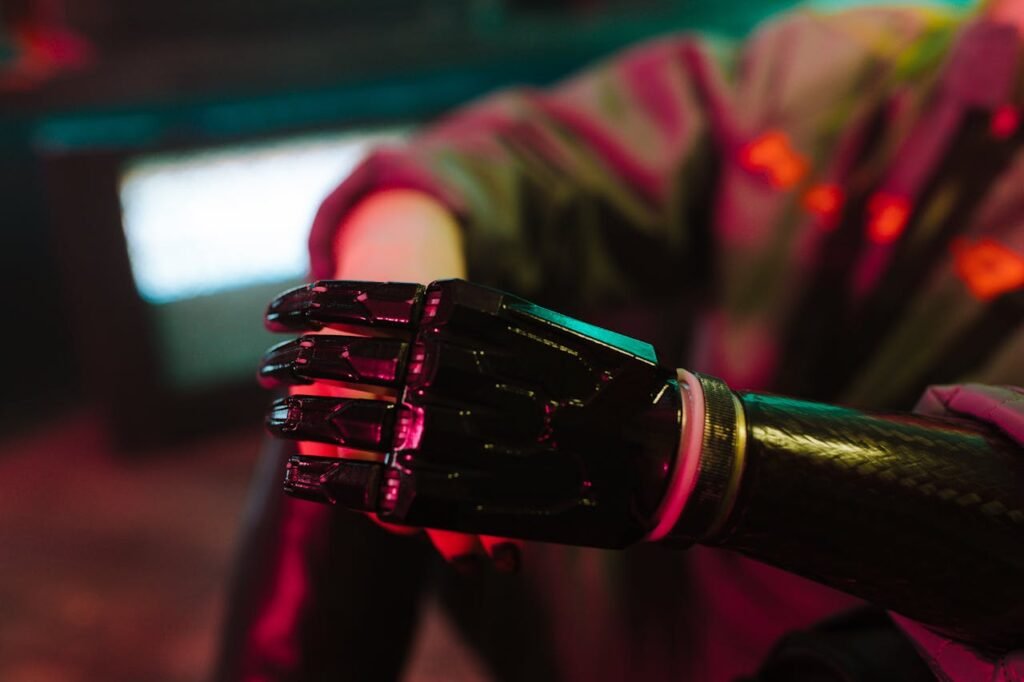
Money may build a prosthetic, but faith builds motion. Seniors in India now have real choices—EMI flexibility, insurance support, and cashless care. The dream of affordable independence is no longer distant; it’s here.
At RoboBionics, we stand by every senior who wants to walk again without fear of cost. We design, guide, and support with one promise: no person should have to choose between mobility and money.
If you or your loved one is exploring prosthetic options, book a free demo with our team at https://www.robobionics.in/bookdemo/.
Because the most valuable step is not the one you pay for—it’s the one that sets you free.



